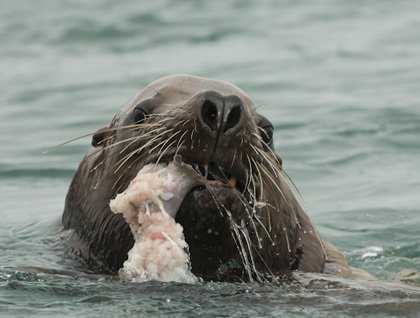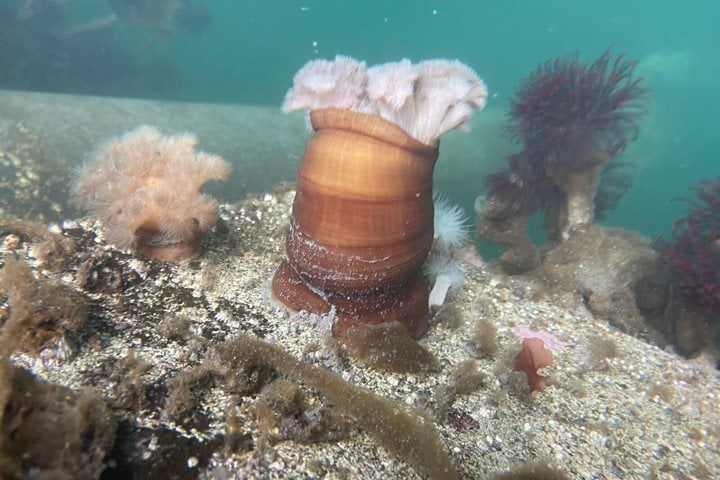The second day of our expedition started in a very pleasant way, with low clouds partially covering the top of the mountains, showing the occasional silhouettes of large Sitka spruces and western hemlocks and making for an ethereal landscape.
As the National Geographic Sea Bird slowly made her way around the northern portion of Chichagof Island towards a small archipelago known as the Inian islands, a few humpback whales showed their tall blows as the exhaled after a dive. We arrived to the Inians shortly before breakfast and got ready for a most exciting morning exploring the area with our expedition landing craft. This small group of islands is located between the large Chichagof Is. and the south end of the Fairweather range in the mainland; the area constitutes the main pass in the northern portion of the Inside Passage and the huge tidal range creates extremely strong currents at the Inians during the spring tides every month.
As the strong currents collide with big rocks and underwater promontories flow upwards, bringing large numbers of fish close to the surface and numerous creatures take advantage of the opportunity. We had a marvelous time watching the great abundance of marine birds, including black-legged kittiwakes, pigeon guillemots, and bald eagles capturing small fish at the surface or picking up fish scraps that Steller sea lions left behind. The Steller sea lion is the largest sea lion species in the world and a powerful swimmer, capable of moving at ease around the extremely fast current to capture large fishes. Today we all had the chance to watch many of them coming up to the surface with big fishes in their mounts and then shaking them violently in the air, trying to break them into smaller pieces they could swallow. The sight of such a powerful animal creating havoc at the surface and attracting many hopeful birds towards him is something not easily forgotten!
But the Inian islands are home to many other creatures and we also had the opportunity to observe numerous sea otters, including several individuals feeding on basket stars at the surface with their prey on their bellies. Several harbor seals watched us from the rocks while some more did the same from the water surrounded by kelp.
During lunch we traveled to Idaho Inlet to spend the afternoon at Fox Creek. We explored the beautiful forest and marveled at the impressive perennial bear tracks created by generations of brown bears stepping into each other’s footprints, kayaking and in my case, scuba diving, putting an end to a truly marvelous day in Southeast Alaska.







